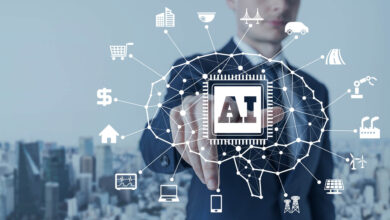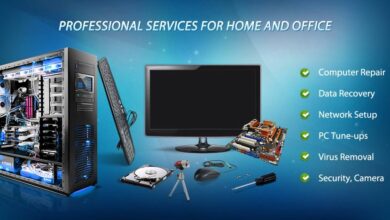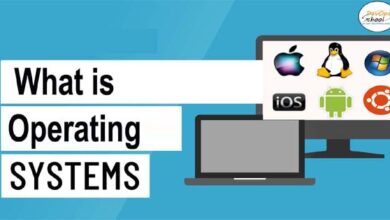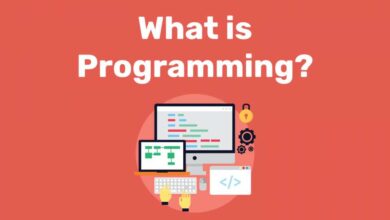The Future of Robotics: What You Should Know About Robots
The Future of Robotics: What To, How To, And What You Should Know
When will superpowers lose their edge? Will autonomous vehicles ever take us away from human beings? What new types of work might robotics help to create? These and other questions have been answered in the past few years, but now many more people are aware of the potential of artificial intelligence —and they want to use that power for good. In this blog post, we’ll explore what will become of humanity as we know it in the future when Robotics enters a new phase. Are we ready for it? Should we be afraid of it? And does this mean we need to rethink our previous approaches to working with computers and robots? Read on for answers to all these questions and more.
What is Robotics?
Robotics is a branch of artificial intelligence. It is a technology that enables machines to ‘read’ human behaviour, it can ‘intrude’ into our everyday activities and question our thought processes. It is used in robots to coordinate, move, and sense beeping and clicking sounds.
Robotics is different from AI in that it is not brain-based, but is instead computer-aided. While AI is fully aware of its environment, a Robotics device is unaware of its surroundings. AI relies on information from sensors to make informed decisions, while a Robotics device sees its surroundings with no human interventions.
Why is robotics important?
There are many problems that AI can tackle that we cannot. For example, autonomous driving: While AI can expertise its environment, it cannot drive a car on its own. It is also unlikely that robots will be able to supplement our existing workforce.
Telemedicine: AI can help diagnose and treat conditions such as cancer and heart disease, but it cannot perform surgery or provide medical monitoring.
Communication: AI can help you communicate with other computers, but it is not equipped to have communication problems on its own.
Inefficient data collection: AI has great potential to reduce the amount of data it records, but it is not yet equipped to handle continuous data collection. This means that AI will likely record data at a much higher rate than it is designed to process it.
How to use robotics in your life: Theories, techniques and tips
Before you try to use a robotics device in your workplace, consider these factors before buying or planning out what to do.
Is the product right for your business? Does it have the right skill set and appetite for change? Are there areas of expertise that you believe your product could assistance? What is your ROI?
Is there a market for the product? Does the industry accept the product as an standard? If the industry doesn’t, then it is likely that there are no plans to. Is the product ready for the market? If so, what steps will you need to take to get it there?
Is the market for the product big enough? What are the competition? If you have a strong chance of success, what are your strategic priorities? What will it take to disrupt the market and drive an advantage?
Robots with purpose
Robotics, like AI, has the potential to enter a new phase in which it is capable of performing a wide range of tasks. However, there are a few strides that will distinguish it from AI and other advanced robotics technologies. These are:
Robotics with Purpose — Operates on its own.
Robotics with Purpose — Regulated.
Robotics with Purpose — Autonomous.
Can robots be good for work?
AI has shown great potential for helping to reduce the Length of Work in industry, but robots are unique in being able to perform more tasks at a higher rate than humans. They have also proven useful for helping to support groups of people in low-income areas.
There are a couple of benefits to using robots for work:
Robotics can be replaced quickly. AI has shown promise in terms of this, but it has not been able to replace a person who is on the job.
Robotics can be programmed to perform specific tasks. For example, an AI system could be programmed to drive a mobile computer, order food, or assist with other tasks. It can also be programmed to do one or many things at a time.
Robotics has the potential to become more flexible, autonomous, and powerful as it becomes more computer-aided. It could also adapt to changes in its surroundings and make adjustments that maintain its safety.
Should we be afraid of robotics?
AI has shown great potential for helping to reduce the Length of Work in industry, but robots are unique in being able to perform more tasks at a higher rate than humans. They have also proven useful for helping to support groups of people in low-income areas.
There are a couple of advantages to using robotics for work:
Robotics can be replaced quickly. AI has shown promise in terms of this, but it has not been able to replace a person who is on the job.
Robotics can be programmed to perform specific tasks. For example, an AI system could be programmed to drive a mobile computer, order food, or assist with other tasks. It can also be programmed to do one or many things at a time.
Robotics has the potential to become more flexible, autonomous, and powerful as it becomes more computer-aided. It could also adapt to changes in its surroundings and make adjustments that maintain its safety.
Future of Robotics
While we wait for the future of robotics to become more advanced, we might want to take some time to think about the next stage in robotics. In this new stage, robotics will be able to self-assemble. This means that it will be able to create its own muscles and tendons, and will be able to repair itself if it is broken or damages its parts. This is significant because it means that robots will have the ability to work in communities, and make it possible for individuals to share tasks and learn from one another.
Types of Robots You’ll Need To Know About
Robotics has shown great potential for helping to reduce the Length of Work in industry, but it has also shown potential for other tasks as well. To help us identify the most appropriate robotics for our needs, we’ll explore the following types of robots:
Robotics without programmable goals — These robots are designed to assist with day-to-day tasks, such as helping to operate a motorized vehicle or lift a human somewhere.
Robotics with programmable goals — These robots are designed to assist with more complex tasks, such as working as a team to overcome hierarchical challenges or assist with precision medicine.
Robotics with purpose — This type of robot will have a role in helping to regulate human activities.
Robotics with no clear purpose — This type of robot will have no clear purpose, and will be destined to become an aid only in the eyes of the manufacturer.
What will become of humanity as we know it in the future?
The future of robotics is likely to be as diverse as human existence is currently divided. It will likely be characterized by thousands of different types of robots, each with unique capabilities and tasks.
Robotics can be expected to have an impact on society in several ways. One example is in the increasing use of autonomous vehicles. In many ways, robots are already providing a more reliable, affordable, and reliable mode of transportation than previous modes of transportation.
Additionally, robotics can be expected to have an impact on the way that people work. While automation has been a part of human culture for millennia, we have only begun to see the applications of automation in robotics. Robots will likely be used to perform relatively low-intensity tasks such as lifting, lowering, and scanning low-altitude objects.
Robotics will also likely play a role in helping people to manage their health and their environment. This will likely be achieved by robotics, as well as their ability to be autonomous.
Robotics will also likely play a significant role in helping people to understand their environment and to cope with changes that may occur. This will likely be achieved by robotics, as well as the ability to sense and respond to human signals.





